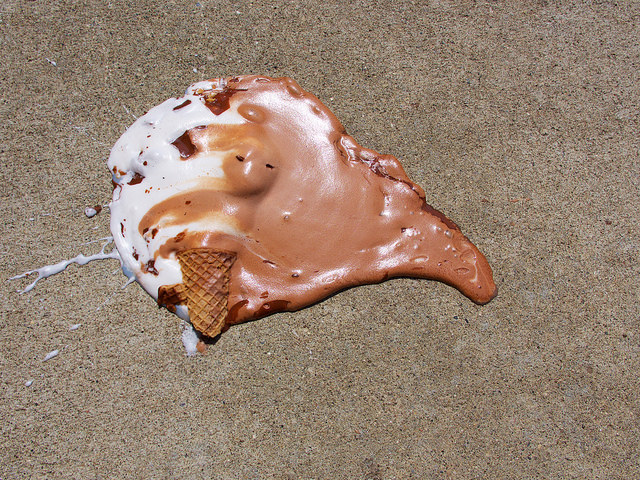
When I was twelve I asked Jeeves how much grass I needed to eat to make myself sick. Jeeves did not understand my question. He only wanted to tell me why dogs ate grass, which I already knew because I had seen my dog eat grass then throw up. This was a fantastic trick I could use to lose weight, but one mouthful of grass convinced me that it was not how I was going to get skinny.
Throwing up to lose weight was a new idea. I’d found a pamphlet on eating disorders in my mother’s desk, in a manila folder of documents pertaining to me. I had just wanted to admire my standardized test scores again, but instead I learned I was fat enough for my mother to consider me a good candidate for an eating disorder. It was not news to me that my mother thought I was fat; she’d been sending me to school with Slimfast for lunch since I was eight.
I finally learned to make myself throw up at fifteen, but it took me a year to graduate from toothbrush to fingers. Starving myself, on the other hand, was easy – while it lasted. It was a short, fraught, well-executed phase that got me down to a respectable weight. Anorexia is sexier and more romantic than bulimia, but it’s boring. When the most exciting part of your day is adding up your calorie count for the fortieth time just to see it come out to 350, you’ve got to take a good hard look at the eating disorder you’ve chosen. Besides which, everyone knows what’s going on when girls don’t order anything to eat at the diner.
I’m biased, but binge-purge bulimics are the best. Exercise bulimics are even less fun than anorexics because they make everyone else feel bad for not working out enough. Laxative bulimics occasionally shit their pants because they believe food digested fast doesn’t count, which is fantastically wrong. Chew-and-spitters may be clever, but the jig is up once they have to eat in public. We binge-purge bulimics will split dessert with you or, better yet, let’s each get our own dessert. If you can’t finish yours, leave it to us. Where do we put it? Same place you do, just not for long.
Bulimia and addiction are often comorbid conditions, which is an unnecessarily frightening way of saying they show up together. Some studies suggest bulimics are addicted to chemicals released in their bodies during a purge: internally released endogenous opioid peptides. Sounds awful except for that magic word, opioid.
Bulimia, like any drug, is fun. Not all of it, but enough of it.
Eating is fun, even if you’re doing it compulsively until you can’t eat anymore and you feel a guilt-like retractable leash pulling you to the bathroom. It’s not fun to worry about your father hearing you over the shower running, or for your mother to find bags of vomit hidden in your closet, or to stand out in the cold after dinner to throw up behind a tree while you’re supposed to be walking the dog. But after, when you’re empty – then it’s fun. The post-purge euphoria is better than cocaine or sex. You did it! You’re a champion! All is forgiven! You feel light and skippy on your way to the fridge to do it again.
Then there’s being thin, which is the most fun I’ve ever had. Being thin is so fun that I dug myself into thousands of dollars of debt outfitting my thin body and buying it shots at the bar and taking it on vacations where it could wear bikinis. Having vomit splash back onto my face twice a day for 10 years was worth it for all the times men I didn’t want to sleep with wanted to sleep with me.
Not that I’m recommending it; it’s not for everyone. It’s not for me anymore, and not for reasons that imply personal growth, unless you consider being too lazy to nurture an addiction “personal growth.” Not everyone knows you must drink water between every bite when you eat something sharp and dense, like Doritos. One bad purge can ruin it forever. Not everyone can get used to liking ice cream for the way it comes up as much as the way it goes down. Not everyone has the stomach for it. Not everyone is as fun as me.
 Margie Sarsfield lives and writes in Columbus, Ohio. This is her first publication.
Margie Sarsfield lives and writes in Columbus, Ohio. This is her first publication.
STORY IMAGE CREDIT: Flickr Creative Commons/Travis Estell


